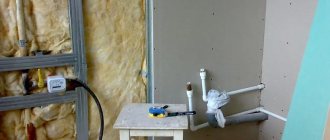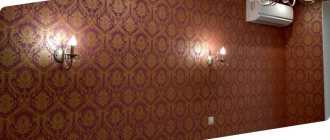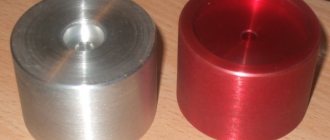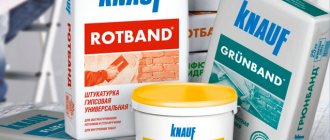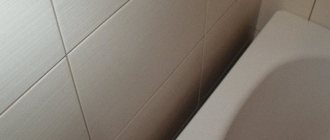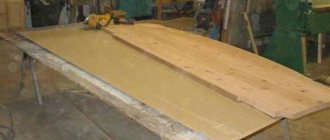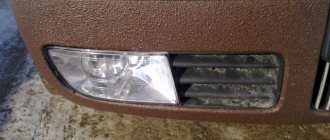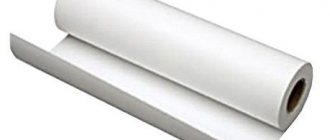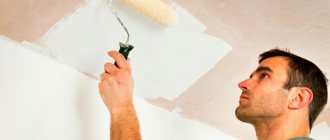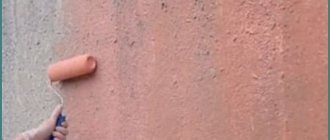Different varnishes are needed, different varnishes are important
In its most general form, varnish is a liquid solution of various resins, which is applied in a thin layer to various surfaces and, after drying, gives them shine and protection from external influences. With the help of varnishing, a significant aesthetic effect is achieved, the service life of many products and the durability of repairs are increased. Varnish compositions are very diverse in terms of area of use:
- Furniture - used indoors to cover any wooden products (not just furniture); they often act as a finishing layer after sealing cracks in a log. They may contain coloring pigments immediately or be supplemented with tinting before use, thereby immediately giving the wood the desired shade during the varnishing process. They are economical in cost, but have low wear resistance;
- Parquet. Used on floors made of natural wood, including factory-treated floors. Parquet varnishes are compatible with parquet itself, solid boards and ordinary floorboards. Their cost is quite noticeable, as is their high abrasion resistance. The common property of furniture and parquet varnishes is low moisture resistance - this is why it is recommended to wipe parquet, furniture and varnished floors with mastic or special compounds, and not wash them with buckets of water;
- Yachting. They are the antipodes of their predecessors in terms of moisture resistance, because they can resist prolonged exposure to sea spray, salty winds and ocean waves for a long time. They are used not only in shipbuilding, but also in land-based household repairs, for example, when varnishing garden furniture, gazebos, stands for wooden canopies or carved trim outside windows. The cost of yacht varnish is several times higher than the price of parquet varnish, so it must be used wisely and carefully;
- Universal or decorative. They occupy an intermediate position between the above-mentioned compositions, allow application indoors and outdoors, and have moderate durability and cost.
Varnish for water-based paint is most often universal. The area of decorative use of water-based acrylic paints is very wide; they are perfect for both interior repairs and exterior decoration, therefore the protection of these paints should have universal properties.
Main types of varnishes by composition
By studying the label (or other accompanying inscription) on the packaging of a container of varnish, you can glean a lot of useful information about its components and compatibility with paint. The formulas of varnishes and the technologies for their production are very diverse:
- Oil based, based on organic (natural or synthetic) oils and resins. They are best compatible with wood surfaces; this material absorbs oily substances well and has high hardness after hardening. Unfortunately, the hardening of oil varnishes itself can take several days;
- Alkyd - produced from alkyd resins and synthetic solvents. In terms of moisture resistance and wear resistance, they are better than oil ones, and dry a little faster. They have universal qualities - they can be used to varnish interior items and products located outside. They can be applied using all known methods – from miniature brushes to rollers and sprayers;
- Acrylic – environmentally friendly and absolutely fire safe (available on a water basis). Completely transparent acrylic varnishes well protect any wooden surface and acrylic painting on plaster or plaster, however, their durability depends on the stability of the microclimate in the room;
- Nitrovarnishes are advantageous because they harden quickly and adhere quite “tenaciously” to the surface being treated . The disadvantage of nitro varnishes is toxicity and the ability to corrode the painted base, so before varnishing you need to stock up on a respirator and test the nitro varnish in an inconspicuous place, what if instead of a glossy layer, rags of new paint form?
- Polyurethane is a universal and convenient composition with high resistance to mechanical, natural and chemical influences. Well compatible with various materials and paints. Among the “disadvantages” of polyurethane varnishing, one can note its technical complexity and high cost;
- Epoxy. They are inferior to polyurethane in aesthetic qualities, comparable in strength, and dry faster. Typically used for varnishing wooden products in rooms with high humidity (baths, saunas, steam baths, swimming pools).
How to varnish acrylic paint - step by step diagram
Step 1: Choose a varnish
Be sure to check whether the varnish you like (acrylic, polyurethane or universal) is compatible with the type of base - wood, plaster or putty. It is highly desirable that the varnish composition with acrylic components be fresh, that is, no more than 90 days have passed since its manufacture. All other things being equal, it is better to purchase a matte composition instead of a glossy one, because... acrylic paint rarely needs additional shine.
Step 2: Getting ready for varnishing
Protective film, cellophane, glass, etc. need to be carefully removed without damaging the acrylic base. If dust is found on the surface, remove it with a vacuum cleaner (without contact with the base!) In extreme cases, you can use a feather whisk. Moreover, movements should be as careful and measured as possible. Mechanical sweeping with rags is strictly prohibited - acrylic paints are quite delicate and can fly around with petals of multi-colored hopes even before varnishing.
The varnish itself should be heated to a temperature of 40-50 ˚C before applying it to a dust-free surface. It is best to perform this operation in a water bath. If you don’t have a thermometer at hand, then you can stick to the empirical ratio: a three-liter jar of varnish in a boiling liter of water heats up to a temperature of 40-50 ˚C in about five minutes. During heating, the varnish composition must be stirred several times with a smooth lath.
Step 3: Varnish!
It is important to set the lighting correctly; in the dark, the best painter will not be able to cope with the task. The optimal light source is at the top and to the right, even if the room is sufficiently illuminated. It is best to work with a wide fluted brush - from 50 to 150 mm wide, depending on the volume of varnish. Take a small amount of varnish onto the brush (so that it does not drip onto the floor or flow over the product) and apply it to the surface with wide, smooth strokes, moving from top to bottom. The trajectory of the brush movements should be parallel to the upper border of the varnish. After processing 0.5-0.7 m2, the varnish layer must be polished.
Polishing is done with a dry flute brush using top-down movements. When the dry brush begins to stick to the surface being treated, you should move on to varnishing new areas. The finished product should be protected from dust accumulation until the varnish layer hardens. This is done by installing visors, film frames, etc. It is better to try self-varnishing with acrylic paints on small products; once you acquire skills, you can move on to decorative elements with a significant surface area.
It is not very often that you see a car coated with matte rather than shiny varnish on the street. How beautiful it is is a moot point, but what is original is undeniable. Let's try to figure out together what matte varnish is, how to apply it correctly, the advantages and disadvantages of a matte surface.
Varnishing tool
The set of equipment for working with varnish with your own hands depends on at what stage of painting the car the coating will be carried out. To apply to a fresh base coat, you only need a spray gun with a nozzle size of about 1.5 millimeters.
If you decide to varnish a car that has been painted for a long time, then you will additionally need a sanding machine and abrasive paper with fine grain.
If polishing is needed after applying the varnish, you should also prepare a special paste. Usually this procedure is required when an inexperienced painter takes on painting the car. The defects left behind have to be removed using a physical method, and since not everyone can paint perfectly with their own hands, polishing will be inevitable.
In addition, even an experienced master cannot always apply a high-quality varnish coating, but polishing brings the process of painting a car to perfection.
What is matte varnish
Matte varnish is an industrially produced chemical compound designed to coat the surface of a car body to give it a matte structure. It has a low gloss level, about 10%, high elasticity, resistance to temperature fluctuations and chemicals.
As a rule, it is produced in a two-component version, the varnish itself and the hardener. Immediately before application, mix in a 2:1 ratio. If you plan to apply the varnish using a spray gun, you need to add a special thinner to it, approximately 10% of the varnish volume to give the required viscosity. The amount of thinner can be adjusted within small limits depending on the type of equipment used, application conditions and the convenience of the performer. Apply at temperatures from 17 to 23 degrees.
In some cases, it is more convenient to use a spray varnish.
Selecting the material
Regardless of when the varnish is applied, immediately after painting or on a hardened coating, the quality of do-it-yourself work largely depends on the material. There are two main types here - simple soft varnishes and those to which a hardener is added. It is quite difficult to choose which one to properly coat the car body after painting. The application technology and properties of the varnish coating in these two cases differ significantly.
Soft varnishes have greater fluidity and require some experience when applying. Using such material, it is very easy to leave smudges and other defects, such as unevenness of the layer.
It dries and hardens much longer, and its protective functions are not so pronounced, but this coating is much easier to polish and sand. It is recommended to apply this material in 3-4 layers.
Application technology, video
There are several of them. One of them is no different from the technology of painting a car with ordinary paint and varnish:
- Wash the car thoroughly;
- We seal the parts that cannot be painted;
- Completely remove the paint layer;
- We repair chips and dents;
- We clean off rust, if any;
- Sand the surface to a uniform matte finish over the entire surface;
- Degrease the surface;
- Apply a primer and sand it as it dries;
- We apply a layer of paint (without drips!), after drying we treat it with sandpaper if the paint is ordinary, or we do not process it if the paint is special matte. We repeat the operation again.
- Apply two layers of matte varnish.
This technology, of course, is the most advanced - it straightens the body and eliminates pockets of rust. If you examine the matte surface under a microscope, there will be mountains and gorges. So, with this method of matte painting, these mountains will be the most durable and durable.
There is a simplified way:
- Wash the car thoroughly;
- We seal the parts that cannot be painted;
- We process the paintwork with sandpaper;
- Degrease the surface;
- Apply two or three layers of transparent matte varnish.
In this case, the effect is almost the same, only with a slightly worse shine, it turns out to be more than 15%, but it turns out cheaper.
Other publications in the “Bathroom Renovation” section
Hello! Please tell me, during the reconstruction of the house, we insulated the wall in the future half-brick bathroom in this way: 50 mm wooden blocks on the brick, then Izospan D100 film, then 50 mm TechnoNIKOL insulation, and then 12 mm moisture-resistant plasterboard. This is the outer wall. But on film.
Hello The bathroom has a wooden frame, insulated with foil insulation and covered with ordinary plasterboard. Is it worth replacing a wooden frame with a metal frame made from a profile? Will the frame fail in the future? The bathroom has been like this for 5 years. I want to tile the bathroom. There is no need to worry if you are in Va.
I have cracked tiles in my bathroom, how can I replace them myself? This happens due to poorly laid adhesive base under the tiles, it is entirely the fault of the builders, they decided to save on tile adhesive. To remove broken tiles yourself, you need to stock up on a scraper.
Source: blogstroiki.ru
Advantages and disadvantages of matte painting
The advantages include, first of all, the original appearance (for which, in fact, everything was started), there is no need for a high-pressure washer, in some cases it is even harmful. This surface can be washed with a cloth and water, without pressing; no streaks are visible on such a surface. Small defects are not noticeable on the matte surface, and the coating withstands a wide range of temperatures.
But any medal has two sides. And the first drawback is the rather high price. Full painting of a small sedan can be done for up to 30,000 rubles, and matte painting starts at 50,000 rubles - the materials are more expensive and the work requires non-standard skills. The color range is limited, so applying a transparent matte varnish over the original paint expands the design possibilities. In addition, the color of a matte coating is unstable, this is due to the fact that the matte surface does not reflect radiant energy, but absorbs it, which leads to strong heating of the paintwork, thereby worsening the parameters of the coloring matter.
The coating must be protected from mechanical influences, as they can damage the structure of the coating. There is a known case when wedding ribbons left a small but noticeable mark on the hood - they “polished” it.
Skillfully and competently applied matte varnish will give your car a special charm and emphasize your courage and individuality. Go for it!
